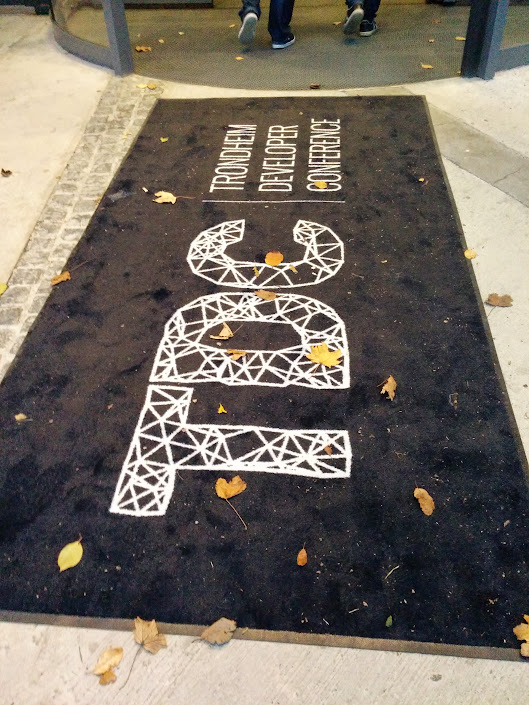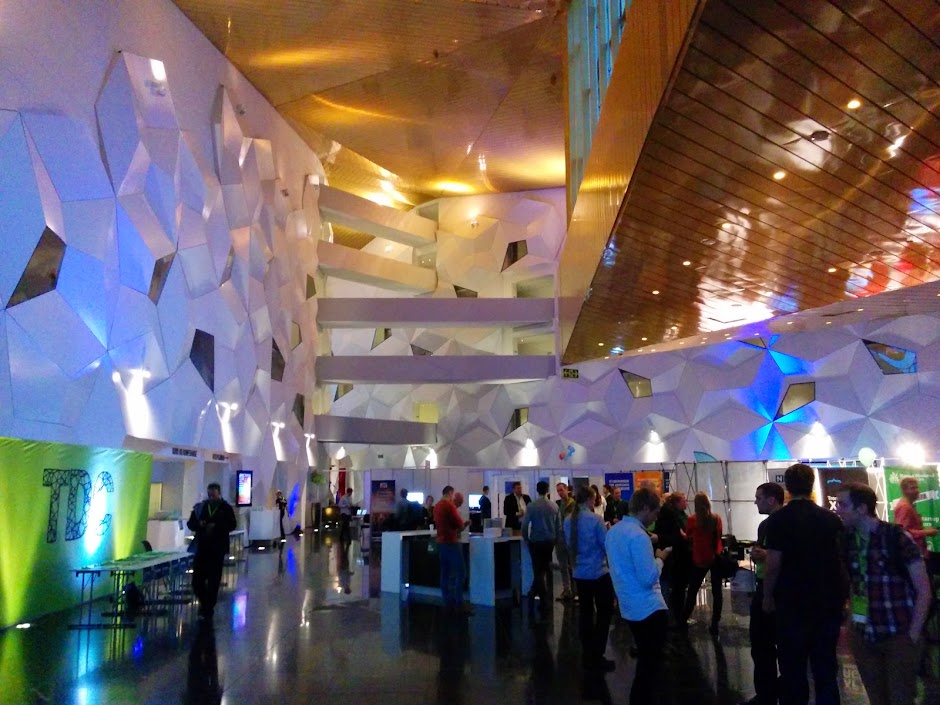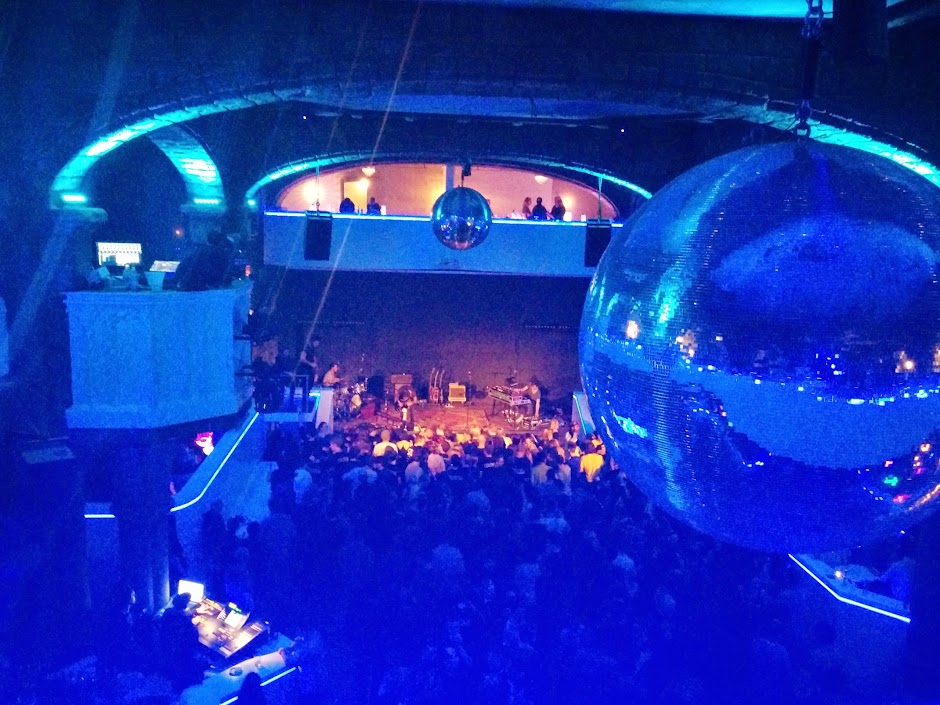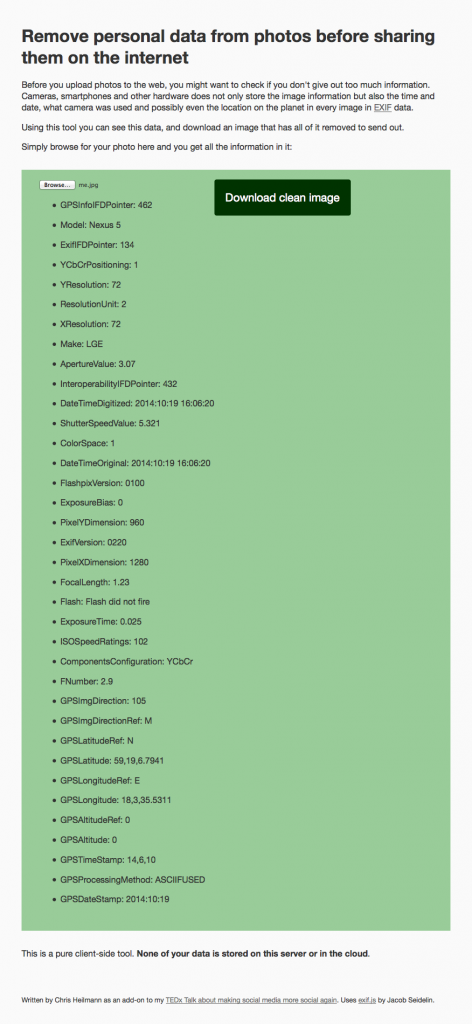Speaking at the Trondheim Developer Conference – good show!
Tuesday, October 28th, 2014TL;DR: The Trondheim Development Conference 2014 was incredible. Well worth my time and a fresh breath of great organisation.

I am right now on the plane back from Oslo to London – a good chance to put together a few thoughts on the conference I just spoke at. The Trondheim Developer Conference was – one might be amazed to learn – a conference for developers in Trondheim, Norway. All of the money that is left over after the organisers covered the cost goes to supporting other local events and developer programs. In stark contrast to other not-for-profit events this one shines with a classy veneer that is hard to find and would normally demand a mid-3 digit price for the tickets.
This is all the more surprising seeing that Norway is a ridiculously expensive place where I tend not to breathe in too much as I am not sure if they charge for air or not.


The location of the one day conference was the Clarion Hotel & Congress Trondheim, a high-class location with great connectivity and excellent catering. Before I wax poetic about the event here, let’s just give you a quick list:
- TDC treats their speakers really well. I had full travel and accommodation coverage with airport pick-ups and public transport bringing me to the venue. I got a very simple list with all the information I needed and there was no back and forth about what I want – anything I could think of had already been anticipated. The speaker lounge was functional and easily accessible. The pre-conference speaker dinner lavish.
- Everything about the event happened in the same building. This meant it was easy to go back to your room to get things or have undisturbed preparation or phone time. It also meant that attendees didn’t get lost on the way to other venues.
- Superb catering. Coffee, cookies and fruit available throughout the day.
- Great lunch organisation that should be copied by others. It wasn’t an affair where you had to queue up for ages trying to get the good bits of a buffet. Instead the food was already on the tables and all you had to do was pick a seat, start a chat and dig in. That way the one hour break was one hour of nourishment and conversation, not pushing and trying to find a spot to eat.
- Wireless was strong and bountiful. I was able to upload my screencasts and cover the event on social media without a hitch. There was no need to sign up or get vouchers or whatever else is in between us and online bliss – simply a wireless name and a password.
- Big rooms with great sound and AV setup. The organisers had a big box of cable connectors in case you brought exotic computers. We had enough microphones and the rooms had enough space.
- Audience feedback was simple. When entering a session, attendees got a roulette chip and when leaving the session they dropped them in provided baskets stating “awesome” or “meh”. There was also an email directly after the event asking people to provide feedback.
- Non-pushy exhibitors. There was a mix of commercial partners and supported not-for-profit organisations with booths and stands. Each of them had something nice to show (Oculus Rift probably was the overall winner) and none of them had booth babes or sales weasels. All the people I talked to had good info and were not pushy but helpful instead.
- A clever time table. Whilst I am not a big fan of multi-track conferences, TDC had 5 tracks but limited the talks to 30 minutes. This meant there were 15 minute breaks in between tracks to have a coffee and go to the other room. I loved that. It meant speakers need to cut to the chase faster.
- Multilingual presentations. Whilst my knowledge of Norwegian is to try to guess the German sounding words in it and wondering why everything is written very differently to Swedish I think it gave a lot of local presenters a better chance to reach the local audience when sticking to their mother tongue. The amounts of talks were even, so I could go to the one or two English talks in each time slot. With the talks being short it was no biggie if one slot didn’t have something that excited you.
- A nice after party with a band and just the right amount of drinks. Make no mistake – alcohol costs an arm and a leg in Norway (and I think the main organiser ended up with a peg leg) but the party was well-behaved with a nice band and lots of space to have chats without having to shout at one another.
- Good diversity of speakers and audience There was a healthy mix and Scandinavian countries are known to be very much about equality.
- It started and ended with science and blowing things up. I was mesmerised by Selda Ekiz who started and wrapped up the event by showing some physics experiments of the explosive kind. She is a local celebrity and TV presenter who runs a children’s show explaining physics. Think Mythbusters but with incredible charm and a lot less ad breaks. If you have an event, consider getting her – I loved every second.

I was overwhelmed how much fun and how relaxing the whole event was. There was no rush, no queues, no confusion as to what goes where. If you want a conference to check out next October, TDC is a great choice.
My own contributions to the event were two sessions (as I filled in for one that didn’t work out). The first one was about allowing HTML5 to graduate, or – in other words – not being afraid of using it.
You can watch a the screencast with me talking about how HTML5 missed its graduation on YouTube.
The HTML5 graduation slides are on Slideshare.
The other session was about the need to create offline apps for the now and coming market. Marketing of products keeps telling us that we’re always connected but this couldn’t be further from the truth. It is up to us as developers to condition our users to trust the web to work even when the pesky wireless is acting up again.
You can watch the screencast of the offline talk on YouTube.
The Working connected to create offline slides are on Slideshare.
I had a blast and I hope to meet many of the people I met at TDC again soon.





